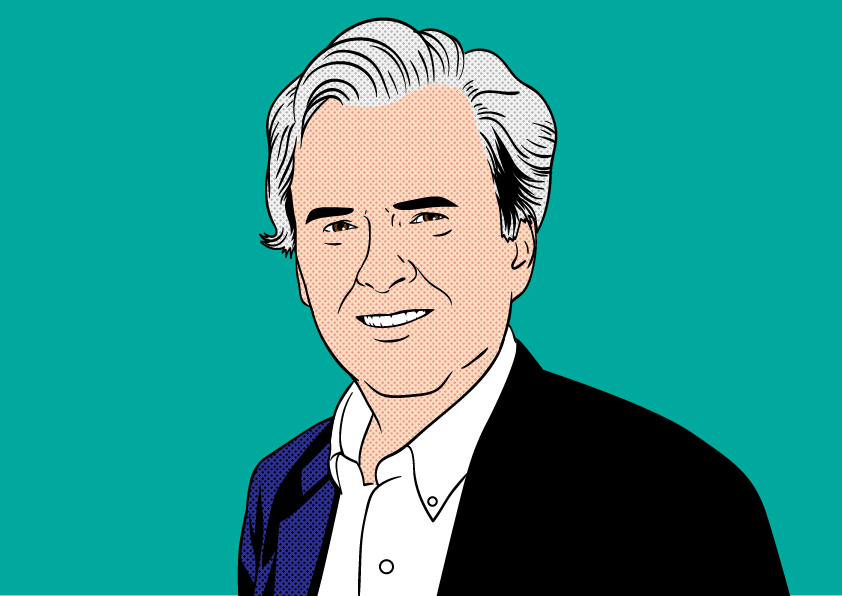A Kinder, Gentler United?

by Robert McGarvey
Just when it seems United had resolved to being crowned the most despised airline – it’s lowest ranked in the recent J D Power survey – the carrier may be making a break in the direction of kindness. Will we be persuaded?
Two recent events have me pondering whether it’s time for me to give United another chance. Hear me out before deciding I am nuts. And, yes, I remember JoeSentMe columnist Ralph Raffio’s apocalyptic pronouncement: “United is a bad airline run by bad people and it’s dead to me forevermore.”
But, still, hear me out.
Exhibit A: yesterday’s email brought me this tantalizing subject line: “We’re upgrading you to Economy Plus for your Chicago flight.” Say what? I am flying to ORD imminently, I am booked in economy, and that subject line on a United email got my attention.
The email continued: “To thank you for flying with us, we invite you to enjoy the comfort of an Economy Plus® seat free of charge on your upcoming trip.”
I do not recall the last time I flew United. In days past I frequently flew Continental and I know my frequency plummeted after the merger and then hit bottom when I moved to Phoenix a few years back. However, when Chicago popped up on my travel schedule I checked the United schedule out of PHX and it worked well for me, and the prices worked for the client. So I booked the ticket. Why? I can’t say I have been especially pleased with any recent economy flight, United has ORD covered well, and why not roll the dice and see what I get? Call it a journalist’s duty to investigate.
Odder is that I won’t take the free economy plus seat – which, as far as I can tell, genuinely is free. I have an aisle seat a few rows back and mainly I saw free middle seats in economy plus so I passed. A quirk of mine is that an aisle seat is non negotiable, or as close to that as we can get in today’s aviation world.
But the United offer intrigued me. I had not earned it based upon recent behavior. Why me? Is this just a random act of kindness? It can’t be, it’s an airline. So why?
Call this a riddle I don’t know the answer too.
Which bring us to Exhibit B, detailed in a Skift story headlined, “United Airlines Simplifies Seat Upgrades With Points Incentives.” The story’s gist: “Many flyers stick with an airline not because they want miles, but because they hope they can upgrade to a flatbed to Europe or Asia for free, saving thousands of dollars per trip.
“United Airlines knows this, and on Tuesday, it outlined a new program executives claim will make it easier for the carrier’s best customers to sit in premium seats. Starting Dec. 4, United no longer will award frequent flyers chits they can use for upgrades, replacing them with a new proprietary currency, called PlusPoints.”
I agree that the perk of frequent flying with one airline is that, when enough miles are logged, the upgrades are the reward – until, in recent years, they slowed significantly as carriers decided they would rather monetize front of the cabin seats. Better to sell a seat for $100 than give it to a frequent flyer has become the carrier philosophy. As Scott McCartney observed in a 2017 Wall Street Journal column, “the most important loyalty benefit—an upgrade—has gotten much rarer because airlines are selling more first- and business-class seats, auctioning them off, and in some cases shrinking those cabins and reducing legroom there as well.”
Just maybe United is giving a little back to frequent flyers with this new policy. According to the press release, “On December 4, United will replace Regional Premier Upgrades and Global Premier Upgrades with PlusPoints. Each RPU will be worth 20 PlusPoints and each GPU will be worth 40 PlusPoints. Members using one RPU today to upgrade from Economy to United First on domestic U.S. and North American flights will use 20 PlusPoints from their banks. A member using one GPU today to upgrade from Economy to United Polaris business class on international long-haul flights will use 40 PlusPoints.”
How to earn points? Skift explained: “Customers will start earning points when they fly 75,000 miles in one year, with United giving them 40. But they won’t start racking up a lot of them until they reach 100,000 miles. Then, they’ll get another 280 points.”
A bottomline: the United promise is that the new plan will give elites much more flexibility about how they spend their elite status and, to my mind, that is a very good thing.
United also stressed that you can still try to depend upon the luck of the draw – that is not spend your new points and pray for upgrades. Per the carrier, “PlusPoints does not replace or change United’s Complimentary Premier Upgrades benefit. In recognition of their loyalty, all Premier members will continue to be placed on upgrade waitlists for flights operated by United and United Express when available.”
Right. But for those who have given up on the quest for free upgrades, the option to spend earned points just might be a tempting offer. It isn’t a magic bullet. But it just might be a better deal for many. As Gary Leff observed in View from the Wing, “This is basically the same program (with a few tweaks) but a new currency that allows members to spend fewer points for less valuable upgrades, more points for more valuable upgrades.”
Stay tuned. I may be giving a United another chance. At least I am flying it next week and, you know, I hope it works out.
